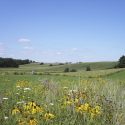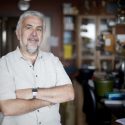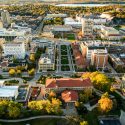DOE renews funding for Great Lakes Bioenergy Research Center; UW–Madison hub to receive $27.5 million for 2023
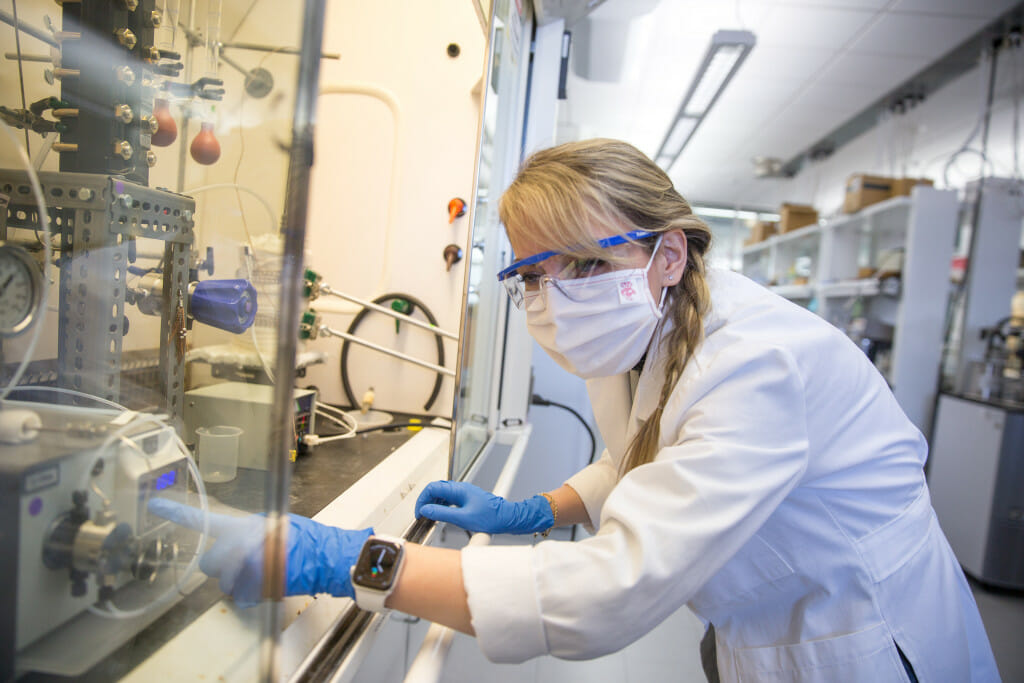
Canan Sener, scientist in the Great Lakes Bioenergy Research Center, prepares an experiment in her lab. Sener’s research focuses on turning plant material into valuable products. Great Lakes Bioenergy Research Center
The U.S. Department of Energy has awarded a University of Wisconsin–Madison based research center another five years of funding to develop sustainable alternatives to gasoline, diesel and other hydrocarbon fuels as well as products currently made from petroleum.
The extension will allow scientists at the Great Lakes Bioenergy Research Center (GLBRC) to continue foundational research to enable the breakthroughs needed for the cost-effective conversion of non-food plants into low-carbon replacements for jet fuel, diesel and other fossil fuels. Those biofuels are a key component of plans to decarbonize the transportation sector and advance a sustainable, safe and secure bioeconomy.
GLBRC researchers are also working to increase plant productivity and develop cost-effective processes to convert as much of the plant material as possible into chemicals used to make products like polyester, nylon, lubricants and plastics.
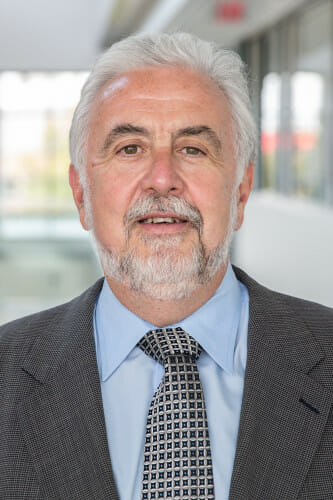
Tim Donohue
“To meet our future energy needs, we will need versatile renewables like bioenergy as a low-carbon fuel for some parts of our transportation sector,” says U.S. Secretary of Energy Jennifer M. Granholm. “Continuing to fund the important scientific work conducted at our Bioenergy Research Centers is critical to ensuring these sustainable resources can be an efficient and affordable part of our clean energy future.”
Established in 2007 by the Biological and Environmental Research program in DOE’s Office of Science, GLBRC is based at UW–Madison’s Wisconsin Energy Institute in collaboration with Michigan State University (MSU) and other partners.
“The goals are to lower net greenhouse gas emissions from fuels and chemicals production, meeting a growing demand for products and developing a sustainable circular bioeconomy that benefits industries and communities that haven’t traditionally been producers of fuels and chemicals,” says Tim Donohue, GLBRC Director and UW–Madison professor of bacteriology.
GLBRC is slated to receive $27.5 million this year, bringing the center’s lifetime awards more than $410 million and making it the largest federally-funded project in UW–Madison history. According to DOE, the center could receive up to $147.5 million over the next five years, contingent on availability of Congressional funding.
“This grant renewal is testimony to GLBRC’s strong record of success,” says Steve Ackerman, UW–Madison’s vice chancellor for research and graduate education. “This growing research opportunity will support a new generation of basic and applied research that benefits the UW–Madison research mission and epitomizes the Wisconsin Idea by creating economically viable and environmentally sustainable solutions for biorefiners, farmers, rural communities and society as a whole.”
One of four federally-funded bioenergy research centers, the cross-disciplinary center brings together biologists, chemists, engineers and economists, employing more than 450 researchers, students and staff conducting foundational research. Since its inception GLBRC has provided a training home for more than a thousand students and staff.
“GLBRC is a flagship program and one of our most important partnerships,” says Doug Gage, vice president for research and innovation at MSU. “This collaboration has been a model for bringing together the research strengths of MSU, the University of Wisconsin and other partners to comprehensively address very complex problems. We look forward to continuing the collaboration to advance basic science and energy security for the U.S. and beyond.”
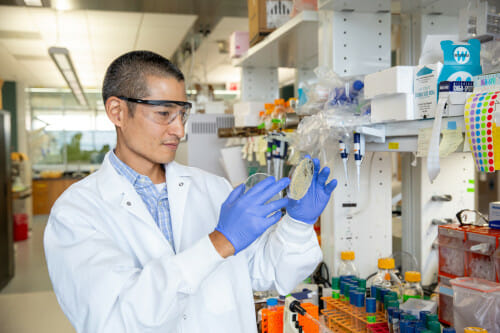
Great Lakes Bioenergy Research Center researcher Trey Sato monitors yeast cultures in his lab. Sato and UW–Madison colleagues have engineered yeast to feast on a previously unpalatable sugar, potentially improving the microorganism’s ability to convert sugars to useful biofuels. Photo by James Runde /Great Lakes Bioenergy Research Center
In addition to UW–Madison and MSU, the center includes collaborators at Princeton University, the University of British Columbia, Texas A&M University and Michigan Technological University.
Over the past 15 years, GLBRC’s academic and industrial partnerships have yielded more than 1,700 scientific publications, 260 patent applications, 113 licenses or options and five startup companies.
The center’s scientists have shown how changes in agricultural practices can lower net greenhouse gas emissions, used genomic maps of switchgrass varieties to increase yields of this key energy crop, modified trees to increase value and lower the cost of processing and discovered how to turn agricultural residues into polyesters, plastics and other polymers.
“The GLBRC has been an outstanding campus partner for WARF,” says Erik Iverson, CEO of the Wisconsin Alumni Research Foundation. “The hundreds of patent applications and dozens of commercial agreements already have enormous potential to address major global challenges. With this grant extension, the progress we’ve already achieved could be just the beginning.”
GLBRC focuses on producing hydrocarbon biofuels and products from dedicated energy crops — such as switchgrass, poplar trees and sorghum — grown on lands not used to produce food. It also seeks to develop sustainable agricultural practices that increase crop yield and value with little or no need for fertilizer and pesticides in order to lower the overall carbon footprint.
Plant biomass, also known as lignocellulose, is the most abundant biological material on Earth. It contains large amounts of sugars and aromatic compounds that can be used to make fuels, solvents and other chemicals.
But this lignocellulose matrix, which gives plants their structure, is hard to break apart, creating barriers to cost-effective production of biofuels and products. That’s why GLBRC scientists are addressing the following science knowledge gaps that currently limit industrial-scale production:
- Developing economically valuable crops that can be grown on non-food land and sustainably converted to biofuels and products.
- Engineering microbes that can efficiently convert those crops to fuel and products using as much of the plant’s biomass as possible at the lowest cost.
- Optimizing the field-to-product pipelines by improving methods for breaking down plants, understanding the effects of seasonal or environmental changes on microbial conversion and creating models to accurately predict environmental and economic impacts on biomass yields and conversion to products.
“GLBRC’s research lays the foundation for technological breakthroughs needed to enable this circular bioeconomy,” Donohue says. “Ultimately these breakthroughs will provide economic benefits to farmers, rural communities, and the industries that bring these biomass-based products to market.”
GLBRC Research Highlights
- Integrating bioenergy production and land management practices can boost climate change mitigation
- Outlining an integrated pipeline from biomass to bioproduct
- Bioenergy crops create local cooling that can increase climate benefit
- Energy crops reduce carbon emissions – if grown on the right land
- MSU researchers uncover new potential for ancient mint plant
- Simplifying biomass breakdown toward making biofuels and chemicals
- Engineered poplar lignin has more of valuable “clip-off” chemical
- Using coproducts from lignin to increase value from biorefineries

